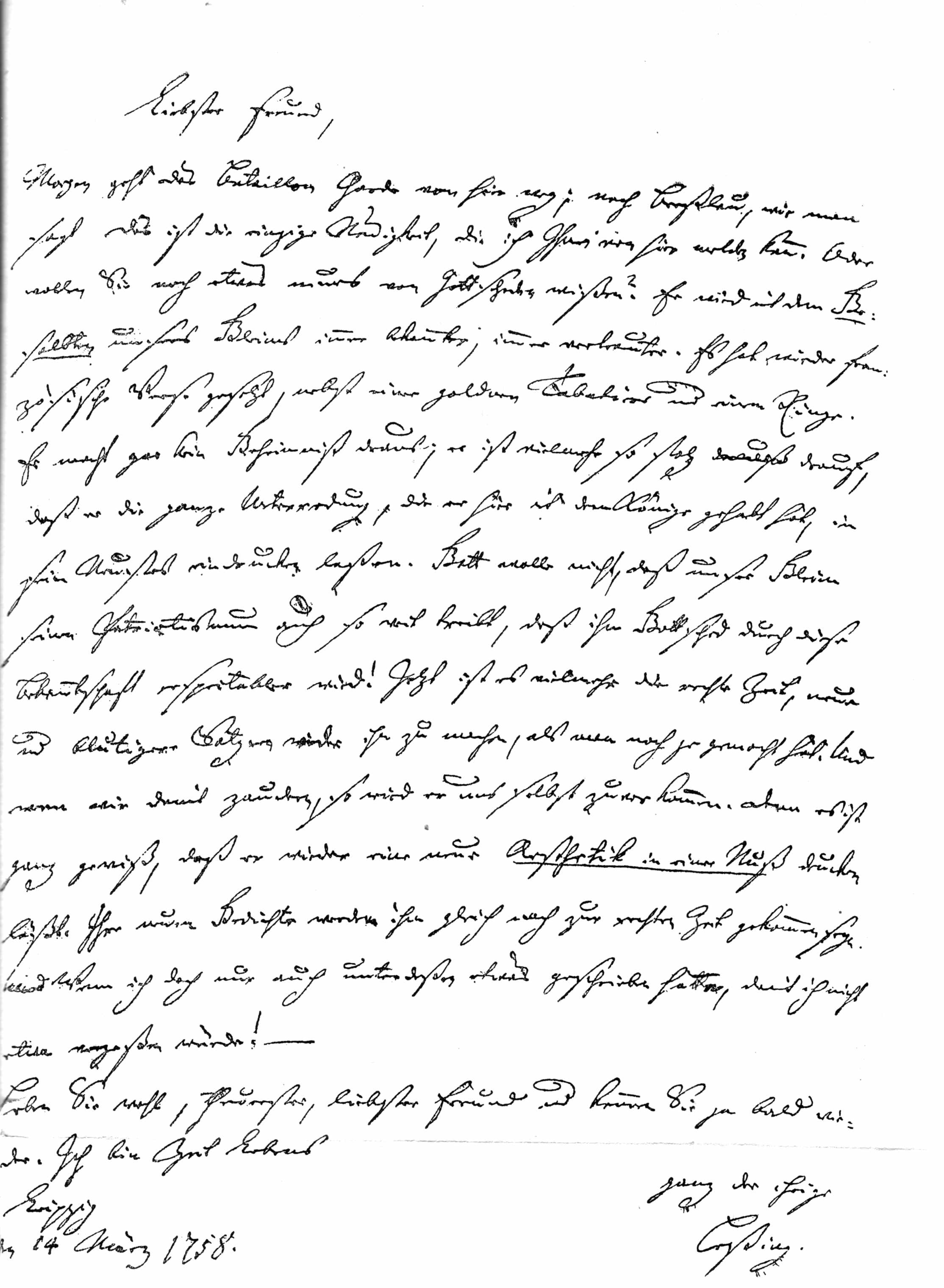
As you can see in this letter written by Lessing around 1750, it requires a particular training to just be able to read the kind of script used in Germany in the 18th-19th century (this letter is indeed a pretty nice and clean example - it usually gets far worse)
The texts we publish in our digital edition are mostly - but not exclusively - written in this kind of script, called german old script ("alte deutsche Schrift" in German, also known as "Kurrentschrift"). The problem we were confronted with was that of a change in the script occurring very often, especially between latin and german old script. The importance of those changes of script is obvious in terms of the materiality of the document, but also as a way to describe the literary practice of the different authors. In traditional German editions of texts of that period, it is standard to render the script differences optically, most of the time by changing font or font size.
But we couldn't find the german old script in the ISO standards (which we use in our encoding). So we (that is in this case Laurent) bravely sent a request to have an ISO number attributed to it.
Here is the answer we received from the ISO committee:
"After submitting your email to the experts, it seems to me that Kurrent is just old German handwriting which uses the Latin script."
Of course, the idea that this would be "just another" Latin script is irritating for us who spend hours trying to figure out what these characters are. But the real problem is that it is precisely the difference from latin script we want to make noticeable.
So the little salsa with the ISO committee might last a little bit, since we certainly will try to have Kurrent considered, if not a non-latin, at least a defined sub-class of latin script.
No comments:
Post a Comment